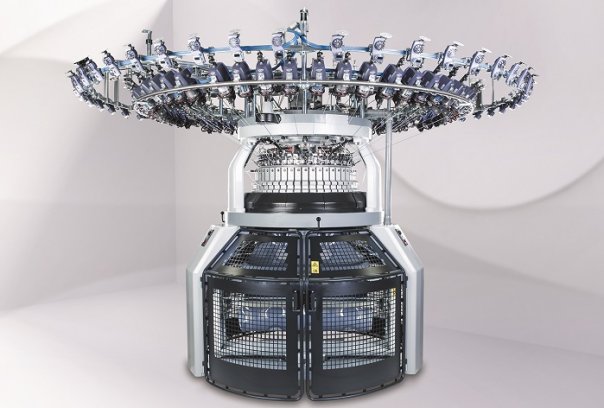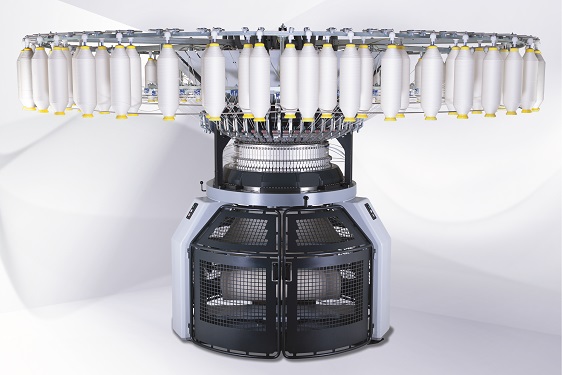
Karl Mayer presents mega trends of our time
It will be the first time the Spinit spinning and knitting machine and the OVJA1.6 EE 3/2 WT have been exhibited in China.

21st August 2018
Knitting Industry
|
Albstadt
Mayer & Cie. (MCT) is focussing entirely on electronic machines at this year’s ITMA Asia, to be held from 15-19 October in combination with the CITME. All three machines scheduled to be on show in Shanghai – the Spinit 3.0 E, the OVJA1.6 EE 3/2 WT and the OVJA 2.4 EC – come in this category.
It will be the first time the Spinit spinning and knitting machine and the OVJA1.6 EE 3/2 WT, designed especially for knitting shoe uppers, have been exhibited in China. And it will be the first time ever that the OVJA 2.4 EC, an electronic jacquard machine that Mayer & Cie. China (MCN) has added to its product line, has been on show.
“We have noticed for some time an increase in demand in the high-end machine segment in China,” said Rudolf Crass, Mayer & Cie.’s regional sales manager with responsibility for China. “High-output circular knitting machines are trending too.”
The new OVJA 2.4 EC that Mayer & Cie. China will present to trade visitors for the first time at ITMA Asia is just such a machine. With its 2.4 systems per inch it is a full jacquard machine that outperforms Chinese manufacturers’ conventional models in productivity. Thanks to its three-way-technology, the OVJA 2.4 EC offers great variety in design patterns. It is aimed at Chinese customers, who produce fabrics for outer garments, sports- and leisurewear.
Its design is borrowed from that of the OVJA 2.4 SE mini-jacquard machine and its functionality is based on that of the OVJA 2.4 E full jacquard machine. The most important difference between it and the two machines on which it is modelled is the implementation of the needle selection. The OVJA 2.4 E relies on electronic individual needle selection on one track via control board and the Chinese model uses 16 athermal electromagnetic actuators on eight tracks. “That has advantages in terms of user friendliness because gauge changes are faster and easier,” explained Crass. “It is also more attractive in terms of pricing combined with high productivity. Not to mention easy spare parts availability for it being domestic system.”
The OVJA 2.4 EC is the first electronic machine to be finally assembled at Mayer & Cie. China.
“We are delighted to be able to present our Spinit 3.0 E spinning and knitting machine ‘in the flesh’ at this year’s ITMA Asia,” says Michael A. Tuschak, Mayer & Cie.’s spinitsystems marketing and sales manager. “The technology, how it works and above all the result are always demonstrated the most impressively on the machine itself.”

Tuschak anticipates visitors to the Mayer & Cie. stand at ITMA Asia with a strong interest in the spinning and knitting technology. Experience, he says, has shown that the technology is mainly of relevance in established textile markets. Larger companies, such as full-service enterprises or spinning mills with forward integration, are constantly looking for ways in which to set themselves apart from the competition.
“The OVJA 1.6 EE 3/2 WT is our first ‘real’ shoe machine,” said Hardy Bühler, Mayer & Cie.’s Key Account Manager Brands. He is keenly concerned with the requirements of the shoe upper fabric growth market. The new machine uses three-way technology in the cylinder and two-way technology in the rib dial. That is said to ensure a very wide range of patterns for the multi-colour jacquard machine, which can at the same time produce a hole structure look by means of multiple tuck loops. It also produces plain and multi-coloured spacer fabrics up to 5 mm thick, which Bühler says is very much in demand for shoe uppers.
Producing spacer fabrics on a circular knitting machine makes sense for several reasons. For one, set-up times are much shorter than when using other means of production. A circular knitter also uses much less yarn to make multi-coloured spacer fabrics. That above all, Bühler says, makes manufacturing small batches of spacer on a circular knitting machine a winner.

Business intelligence for the fibre, textiles and apparel industries: technologies, innovations, markets, investments, trade policy, sourcing, strategy...
Find out more